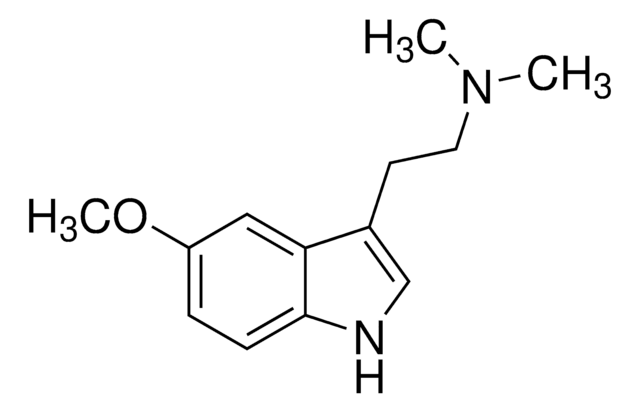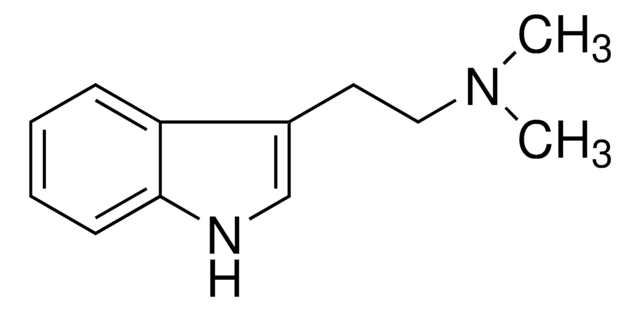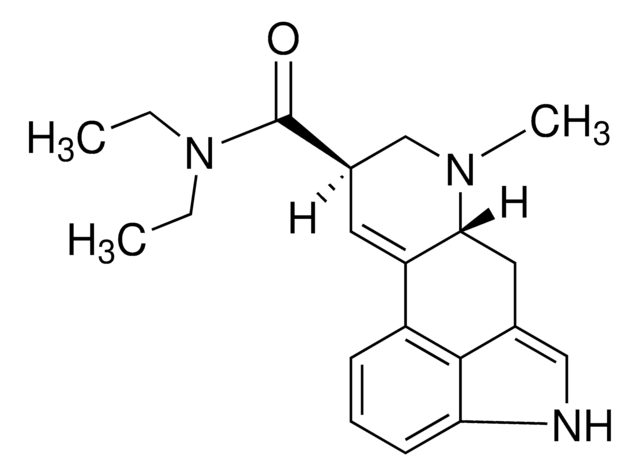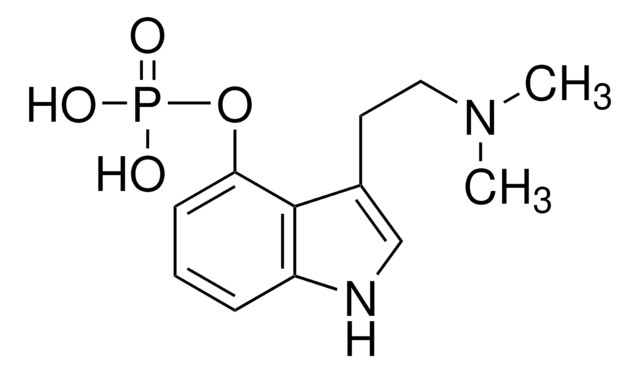Wichtige Dokumente
SML0791
N,N-Dimethyltryptamine
≥97% (HPLC)
Synonym(e):
DMT, Dimethyltryptamine, N,N-Dimethyl-1H-indole-3-ethanamine
About This Item
Empfohlene Produkte
Qualitätsniveau
Assay
≥97% (HPLC)
Form
powder
Arzneimittelkontrolle
USDEA Schedule I; regulated under CDSA - not available from Sigma-Aldrich Canada; psicótropo (Spain); Decreto Lei 15/93: Tabela IIA (Portugal)
Farbe
white to beige
Löslichkeit
DMSO: 15 mg/mL, clear
Lagertemp.
−20°C
SMILES String
CN(C)CCC1=CNC2=C1C=CC=C2
InChI
1S/C12H16N2/c1-14(2)8-7-10-9-13-12-6-4-3-5-11(10)12/h3-6,9,13H,7-8H2,1-2H3
InChIKey
DMULVCHRPCFFGV-UHFFFAOYSA-N
Suchen Sie nach ähnlichen Produkten? Aufrufen Leitfaden zum Produktvergleich
Biochem./physiol. Wirkung
Leistungsmerkmale und Vorteile
Sonstige Hinweise
Signalwort
Warning
H-Sätze
Gefahreneinstufungen
STOT SE 3
Zielorgane
Central nervous system
Lagerklassenschlüssel
11 - Combustible Solids
WGK
WGK 3
Flammpunkt (°F)
Not applicable
Flammpunkt (°C)
Not applicable
Hier finden Sie alle aktuellen Versionen:
Analysenzertifikate (COA)
Die passende Version wird nicht angezeigt?
Wenn Sie eine bestimmte Version benötigen, können Sie anhand der Lot- oder Chargennummer nach einem spezifischen Zertifikat suchen.
Besitzen Sie dieses Produkt bereits?
In der Dokumentenbibliothek finden Sie die Dokumentation zu den Produkten, die Sie kürzlich erworben haben.
Unser Team von Wissenschaftlern verfügt über Erfahrung in allen Forschungsbereichen einschließlich Life Science, Materialwissenschaften, chemischer Synthese, Chromatographie, Analytik und vielen mehr..
Setzen Sie sich mit dem technischen Dienst in Verbindung.







